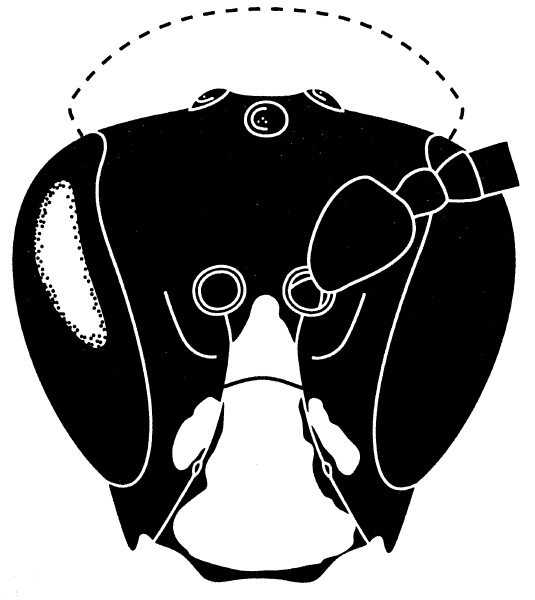Hylaeus in Hawaii

Hylaeus in Hawaii |

|
Hylaeus nivicolaIslands: MauiLocations: Maui - (Haleakala W slope, HALE HQ, Halemauu Trail, Holua, Kalahaku, Kalepeamoa, Kaluaiki, Kapalaoa, Kuiki, Laie, Lauulu Trail, Leleiwi, Na Mana o ke Akua, Paliku, HVC, Kilohana, Puu Maile, Puu Mamane, Puu Keokea, Science City, Sliding Sands Trail, Supply Trail, White Hill) Habitats: Occurring only around Haleakala crater, common in alpine and subalpine dry shrubland down to 6000 ft. Plants: Argyroxiphium, Coprosma, Dodonaea, Dubautia, Geranium, Oenothera, Sophora, Styphelia Xerces: No info. Insects of Hawaii: Medium-sized bees with wings clear to slightly smoky and with unique extremely long malar spaces. Male with unique ridge just below antennal sockets; face withclypeus and supraclypeal area yellow and with small yellow marks in adjacent paraocular areas. Female black and unmarked. Hylaeus nivicola, from the high slopes and crater of Mauis Haleakala Volcano, and H. volcanicus, from Hawaii and Maui, are sister taxa. They are sympatric in the crater of Haleakala. Both sexes have in common malar spaces longer than those of the allied H. laetus and H. difficilis (see also remarks for H. difficilis); and both have the similar lineately rugose anterior area of the propodeum. Males have in common the depressed paraocular area and similar facial marks with conspicuous black tentorial pits (paraocular area less depressed and tentorial pits inconspicuous in the allied H. laetus and H. difficilis). Males of H. nivicola are distinguished by the much longer malar space (the longest of any species in the Islands), rounded ridge beneath the antennal socket (absent in H. volcanicus), more strongly dilated scape with convex lateral margin in frontal view (only slightly dilated and with the margin slightly concave in H. volcanicus), and the simple apex of the median process of S8 (bifurcate with long filamentous tips in H. volcanicus). Females of H. nivicola have a longer malar space, more densely punctured frons with subpolygonal pits, and reddish yellow hair at the tip of the metasoma (malar space shorter; frons with mostly round pits; pale, yellowish hair at the apex of the metasoma in H. volcanicus). Insects of Hawaii Volume 17 
UH/DOD: Hylaeus near military lands 
Other: |

|